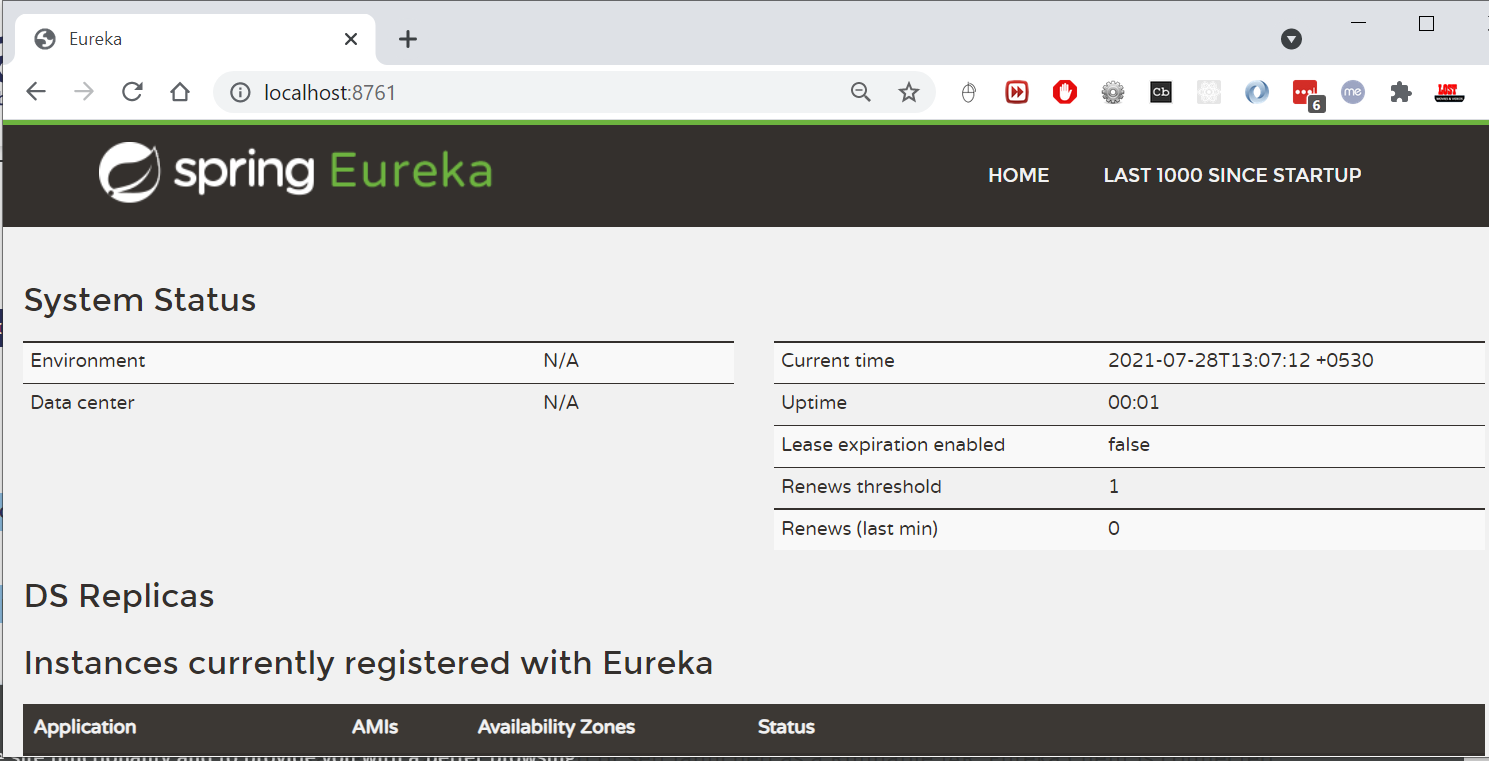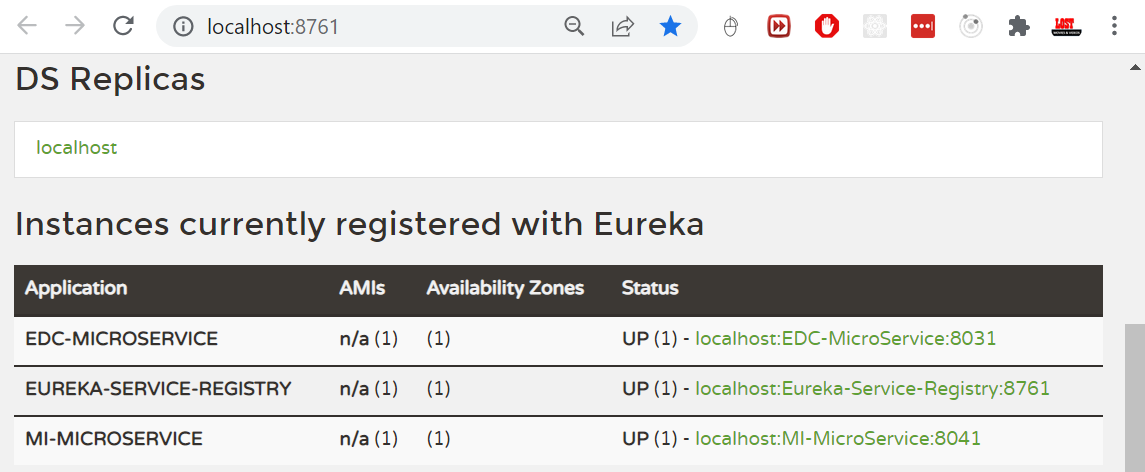Eureka Service Registry and Discovery
In the microservices world, Service Registry and Discovery plays an important role because we most likely run multiple instances of services and we need a mechanism to call other services without hardcoding their hostnames or port numbers.
-
Think of it as a lookup service where microservices (clients) can register themselves and discover other registered microservices.
-
When a client microservice registers with Eureka it provides metadata such as host, port, and health indicator thus allowing for other microservices to discover it.
-
The discovery server expects a regular heartbeat message from each microservice instance. If an instance begins to consistently fail to send a heartbeat, the discovery server will remove the instance from his registry.
Suppose we have 2 microservices EDC-Microservice and MI- Microservice and we are running 2 instances of EDC-Microservice at http://localhost:8031/ and http://localhost:8032/. Now let’s say we want to invoke some EDC-Microservice REST endpoint from MI- Microservice. Which URL should we hit? Generally, in these scenarios, we use a load balancer configuring these 2 URLs to be delegated to and we will invoke the REST endpoint on load balancer URL. Fine.
But, what if you want to spin up new instances dynamically based on load? Even if you are going to run only few server nodes, manually updating the server node details in load balancer configuration is error-prone and tedious. This is why we need automatic Service Registration mechanism and be able to invoke a service using some logical service id instead of using specific IP Address and port numbers.
We can use Netflix Eureka Server to create a Service Registry and make our microservices as Eureka Clients so that as soon as we start a microservice it will get registered with Eureka Server automatically with a logical Service ID. Then, the other microservices, which are also Eureka Clients, can use Service ID to invoke REST endpoints.
Steps to create Netflix Eureka based Service Registry
add Eureka Server starter.
<dependency>
<groupId>org.springframework.cloud</groupId>
<artifactId>spring-cloud-starter-netflix-eureka-server</artifactId>
</dependency>
We need to add @EnableEurekaServer annotation on main class to make our SpringBoot application a Eureka Server based Service Registry.
@SpringBootApplication
@EnableEurekaServer
public class SpringCloudEurekaServerApplication {
public static void main(String[] args) {
SpringApplication.run(SpringCloudEurekaServerApplication.class, args);
}
}
By default, each Eureka Server is also a Eureka client and needs at least one service URL to locate a peer. As we are going to have a single Eureka Server node (Standalone Mode), we are going to disable this client-side behavior by configuring the following properties in application.properties file.
spring.application.name=service-registry
server.port=8761
eureka.instance.hostname=localhost
eureka.instance.client.registerWithEureka=false
eureka.instance.client.fetchRegistry=false
eureka.instance.client.serviceUrl.defaultZone=http://${eureka.instance.hostname}:${server.port}/eureka/
Netflix Eureka Service provides UI where we can see all the details about registered services.Now run the main class, check url http://localhost:8761/

Register EDC-Microservice to Eureka
Add the Eureka Discovery starter to EDC-Microservice which will add the following dependency.
<dependency>
<groupId>org.springframework.cloud</groupId>
<artifactId>spring-cloud-starter-netflix-eureka-client</artifactId>
</dependency>
we just need to configure eureka.client.service-url.defaultZone property in application.properties to automatically register with the Eureka Server.
eureka.client.service-url.defaultZone=http://localhost:8761/eureka/
With this configuration in place, start EDC-Microservice and visit
http://localhost:8761. You should see EDC-Microservice is registered with
SERVICE ID as EDC-MICROSERVICE
